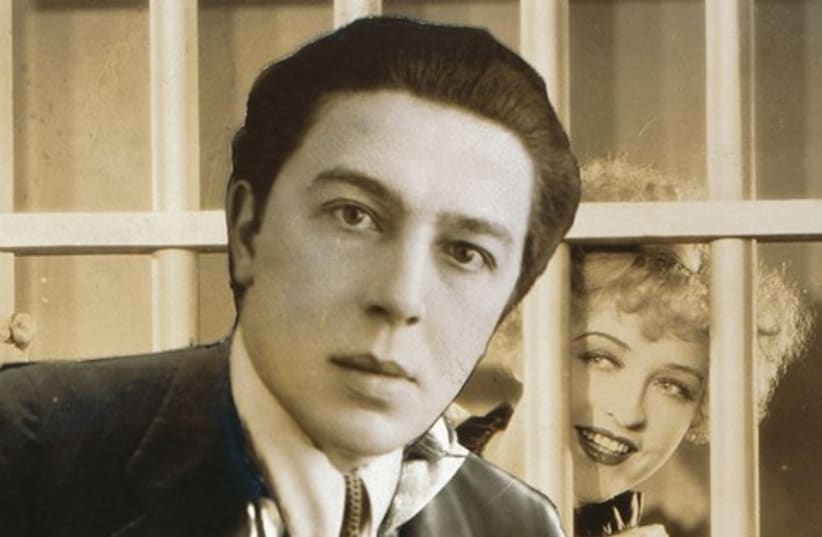From the wealth of that collection comes the SIP’s current exhibition, “The Naked Eye: Surrealist Photography in the First Half of the 20th Century.” Surrealism, as is well known, was a revolutionary cultural movement that arose out of Dadaism and intellectual disillusionment following World War I. Officially launched as a movement with the publication of poet André Breton’s first Manifesto of Surrealism in 1924, it focused on unlocking the creative potential of the imagination. Heavily influenced by Freudian psychoanalysis, Surrealist art strove to dissolve the distinction between dream and reality. Attempting to represent unconscious dreams and visions, artists like Joan Miró, René Magritte and Salvador Dalí created fantastic images that often juxtaposed wildly incongruous elements.Photography soon came to play a central role in the movement. Photographers like Man Ray and Maurice Tabard used a variety of techniques like double exposure, combination printing, montage and solarization to blur the lines between dream and reality. Dr. Aya Lurie, the SIP’s chief curator and organizer of this exhibition, says that the name of the show, “The Naked Eye,” refers to the Surrealist emphasis on creating a “direct, unmediated channel between the ‘real’ world and the human soul,” a direct line running between the naked eye and the realms of the unconscious.The exhibition displays a variety of photographs by virtually all of the major figures in Surrealist photography in the first half of the last century, from Breton to Cecil Beaton. The visitor is able to see, in often disturbing detail, how Surrealist photographers attempted to shock their audiences into discarding their old ideas of what is and is not “real.” Not surprisingly, special pride of place is given to Man Ray, often called the father of Surrealist photography, whose works are displayed alongside those of such artists as Dora Maar, Paul Éluard, Claude Cahun, Hans Bellmer and Luis Buñuel. We see also works by almost 50 other photographers from throughout Europe, the US and Japan.Interestingly enough, what we do not see is so much as one work by an Israeli photographer. Israel, it seems, had no time for Surrealism in the first half of the 20th century. “No time, and no state of mind,” says Lurie. “Israel was not connected to the avant-garde trend of surrealism in the 1920s. We were in a totally different stage in our culture. We were building a new society, while they were declining. The Surrealists in Europe saw a rotten society that was ripe for cultural revolution. We were performing the revolution. We were un-bourgeois, socialist. Those were the idealistic trends that the Surrealists were longing for, while here we were living them.”There was no particular need for Surrealism in Israel at that time, Lurie says. “Surrealism was a revolution – a revolution in life, not just in art. It was a protest movement – anti-bourgeois, anti-old order. It grew out of the Dada movement, which was completely nihilist and negative. It wanted to shatter all of the concepts of the old world. A lot of it was influenced by Freudian psychoanalysis. Freud was their hero. The Surrealist revolution was about life, extending into art, theater and literature. The pioneers here were living the revolution. They were building a utopian society.”Topping off the exhibition is a brief look at Surrealist cinema, featuring Man Ray’s L’Étoile de Mer(The Starfish, 1928), and Buñuel and Dalí’s Un Chien Andalou (An Andalusian Dog, 1929). These are shown with several still photographs from other films made during the first half of the 20th century.As I ponder the photographs and reflect on their artistry and philosophical implications, I recall a question I asked Shpilman when I met him shortly after he opened the SIP: What will happen to the art of photography in an age in which everyone – every child and teenager – has a picturetaking smartphone in his pocket, as well as access to applications like Photoshop and Instagram? At that time Shpilman replied, “Nobody knows yet. It’s a major change. We are now facing the same kind of situation as when photography was invented.”After the passage of almost three years, I ask him the same question. Having had time to think about the impact of digital technology in everyone’s pocket, Shpilman now says, “It’s not going to change the status of photography as an art. If you dig into the history of photography you can already notice that at around 1850, just a little more than 10 years after the invention of photography, all that is going on today with digital things like Photoshop and Instagram had already been introduced in the realm of photography. If you look at this exhibition on Surrealism, you can see all the effects in these photographs that we’re seeing in photos today, now done digitally.“So nothing that is happening now is really new. The new technology simply facilitates the art. It opens new opportunities and possibilities for the artist. But the essence of photography as an art will not change.”“The Naked Eye: Surrealist Photography in the First Half of the 20th Century” is showing until January 2014 at the Shpilman Institute for Photography, 27 Schocken Street, Third Floor, Tel Aviv. For viewing hours and further information call 03-728- 3737 or visit www.thesip.org.
Reflections in a naked eye
Photography as an art hasn’t changed since the late 19th century and won’t be affected by the accessibility of Smartphones and Photoshop, says Shalom Shpilman.
